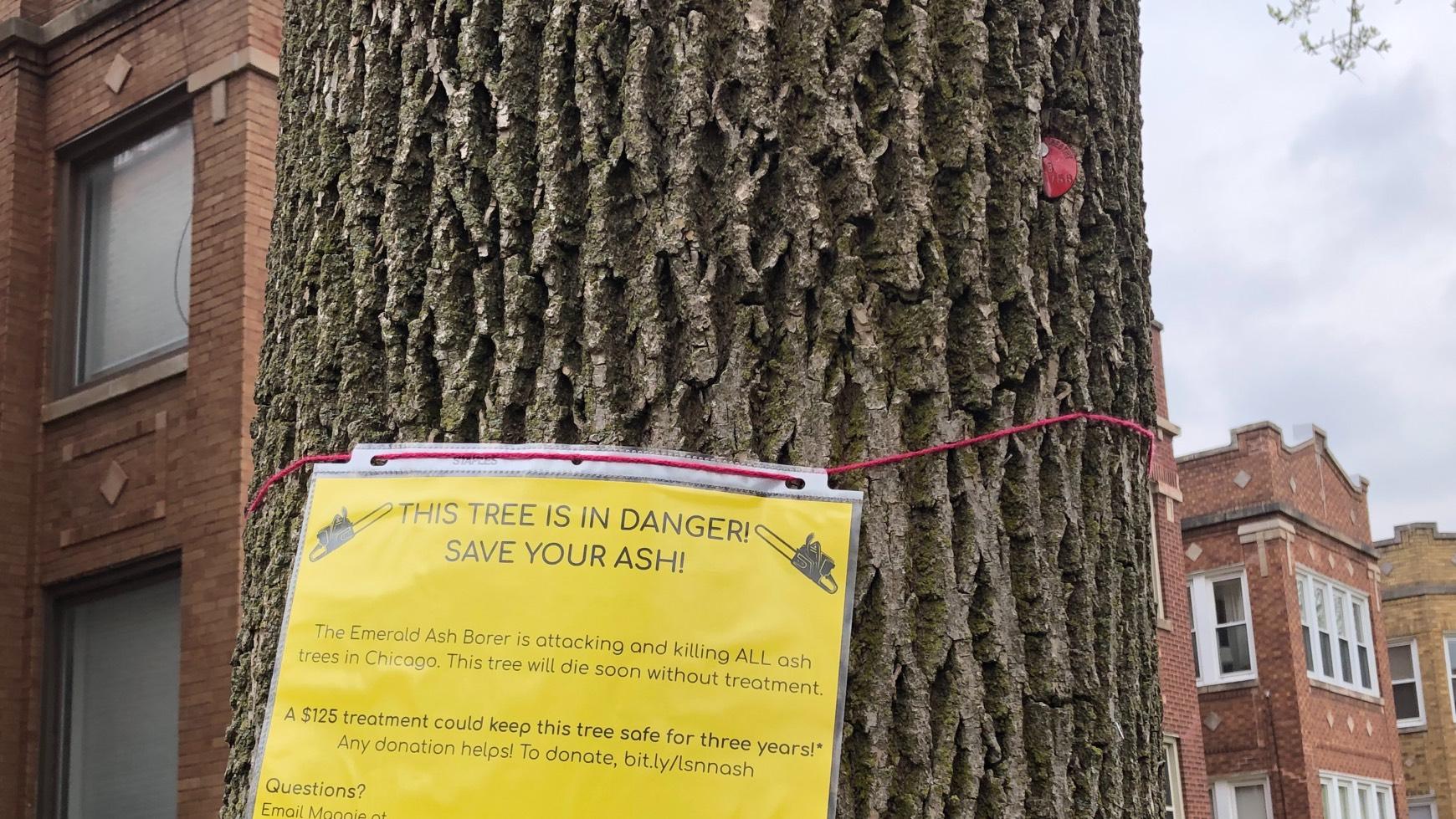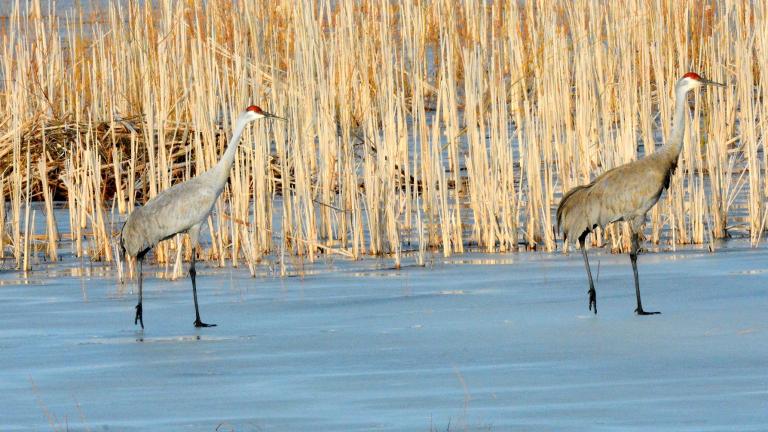 The biggest change between the 2010 tree census and 2020's was the loss of 6 million ash trees. (Patty Wetli / WTTW News)
The biggest change between the 2010 tree census and 2020's was the loss of 6 million ash trees. (Patty Wetli / WTTW News)
The Morton Arboretum has released the results of its 2020 Chicago region tree census just in time for Arbor Day, and while the report contains some good news, there are also several causes for concern.
As expected, the biggest change since the first census was conducted in 2010 is the loss of an estimated 6 million ash trees, felled by the emerald ash borer.
Of the nearly 7 million ash trees still standing, 4 million are either dead or in decline, and of those that are healthy, too many are scarcely past the sapling stage. More than 30% of ash trees in the region have diameters of 3 inches or smaller and are unlikely to reach maturity without ongoing treatment, according to the census report.
Those missing ash trees have left a significant hole in Chicago's canopy cover, a term that refers to the upper layer of leaves, branches and stems that shelter the ground below. Chicago's canopy cover decreased from 19% to 16%, largely because of the disappearing ash trees, the census found.
Two species — the silver maple and Norway maple — are responsible for nearly one-third of the city's leaf coverage. Both maple species are susceptible to pests including the Asian long-horned beetle and the spotted lanternfly, which could leave Chicago vulnerable to additional catastrophic losses. The census report's authors expressed a need for Chicago to diversify its tree population.
In the overall region — the city of Chicago and the surrounding counties of Cook, DuPage, Kane, Kendall, Lake, McHenry and Will — a different invasive species is having an ill effect on the canopy cover and forest health.
European buckthorn accounts for 36% of total trees, an increase from 30% in 2010. In some counties, buckthorn is utterly dominant, at 55%. The problem with the invasive shrub is that it crowds out native plants, causes erosion and presents little in the way of food or habitat for wildlife. And it generally doesn't grow large enough to provide the benefits of canopy trees, according to the census report.
On a positive note, the census did find an increase in the total number of stems, up from 157 million trees in 2010 to 172 million trees in 2020. There are nearly 200 different species represented in that count regionally (103 in Chicago). The down side is that 75% of trees and shrubs in the region are small — less than 6 inches in diameter at breast height. Only 5% are large trees — more than 18 inches in diameter.
Functional forests, the census report noted, should have a structure that supports large, mature trees, which provide the greatest benefits.
Interestingly, despite the loss of ash trees, the canopy coverage regionwide increased from 21% in 2010 to 23% in 2020, which has important implications for carbon uptake, oxygen production and stormwater absorption.
The report's authors theorized that the gains in areas outside Chicago could be due to the conversion of farmland to residential developments, where additional trees have been planted.
Promisingly, the region's oak ecosystem is holding steady. Though oaks make up just 4% of total trees, they account for 13% of leaf area and support more than 600 animal species, the census report noted.
Other census highlights:
Outside of Chicago, McHenry County was the only area to lose canopy cover in the past decade, dipping from 19% to 18%. Kendall County continues to lag the region, with just 11% canopy cover, though that's an improvement over 2010's 9%. Lake, DuPage and suburban Cook counties all have canopy cover at or above 30%.
Lake County has by far the highest concentration of trees, estimated at 149 per acre. DuPage County is a distant second, with 92 trees per acre, followed by suburban Cook with 73. Kendall County has the lowest, with just 15 trees per acre.
The results of the census will be used to guide public policy, including tree planting initiatives, restoration efforts and invasive removal. The report's recommendations include a special emphasis on removing buckthorn; improved care such as regular pruning cycles and watering during drought; and increased diversity of the region's tree population in terms of both size and species.
On the subject of diversity, the report points to the 5:10:15 rule: A tree population should consist of no more than 5% of the same species, no more than 10% of the same genus, and no more than 15% of the same family.
About the census: In 2010, the Morton Arboretum, in collaboration with the USDA Forest Service, undertook the first tree census of the regional forest. In 2020, the Arboretum and its partners, Davey Resource Group and the Student Conservation Association, remeasured 1,576 plots in the city of Chicago and the seven surrounding counties.
Contact Patty Wetli: @pattywetli | (773) 509-5623 | [email protected]








